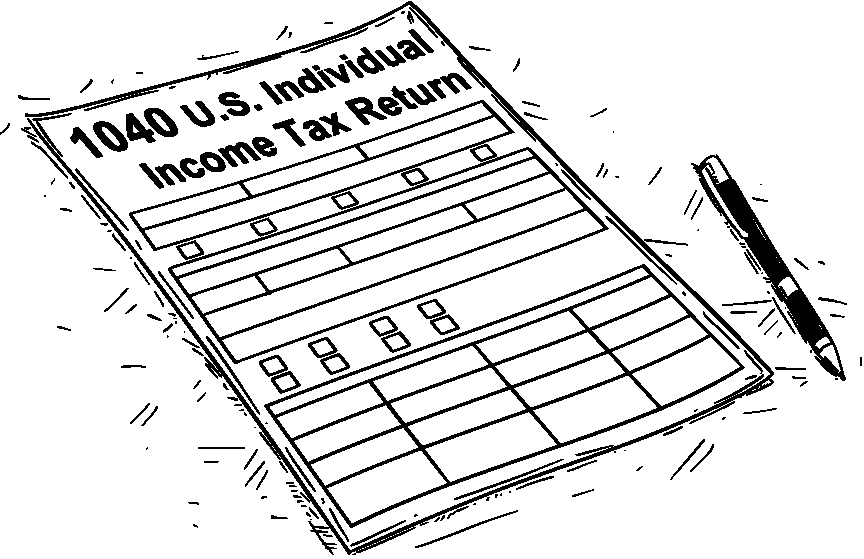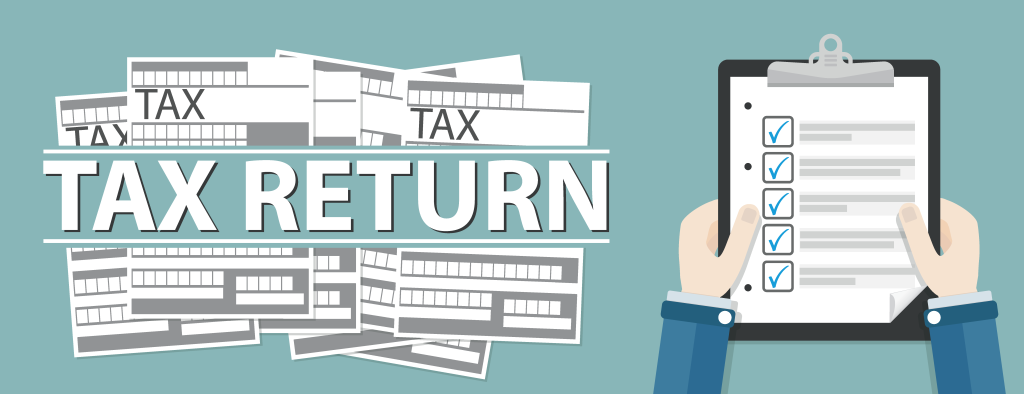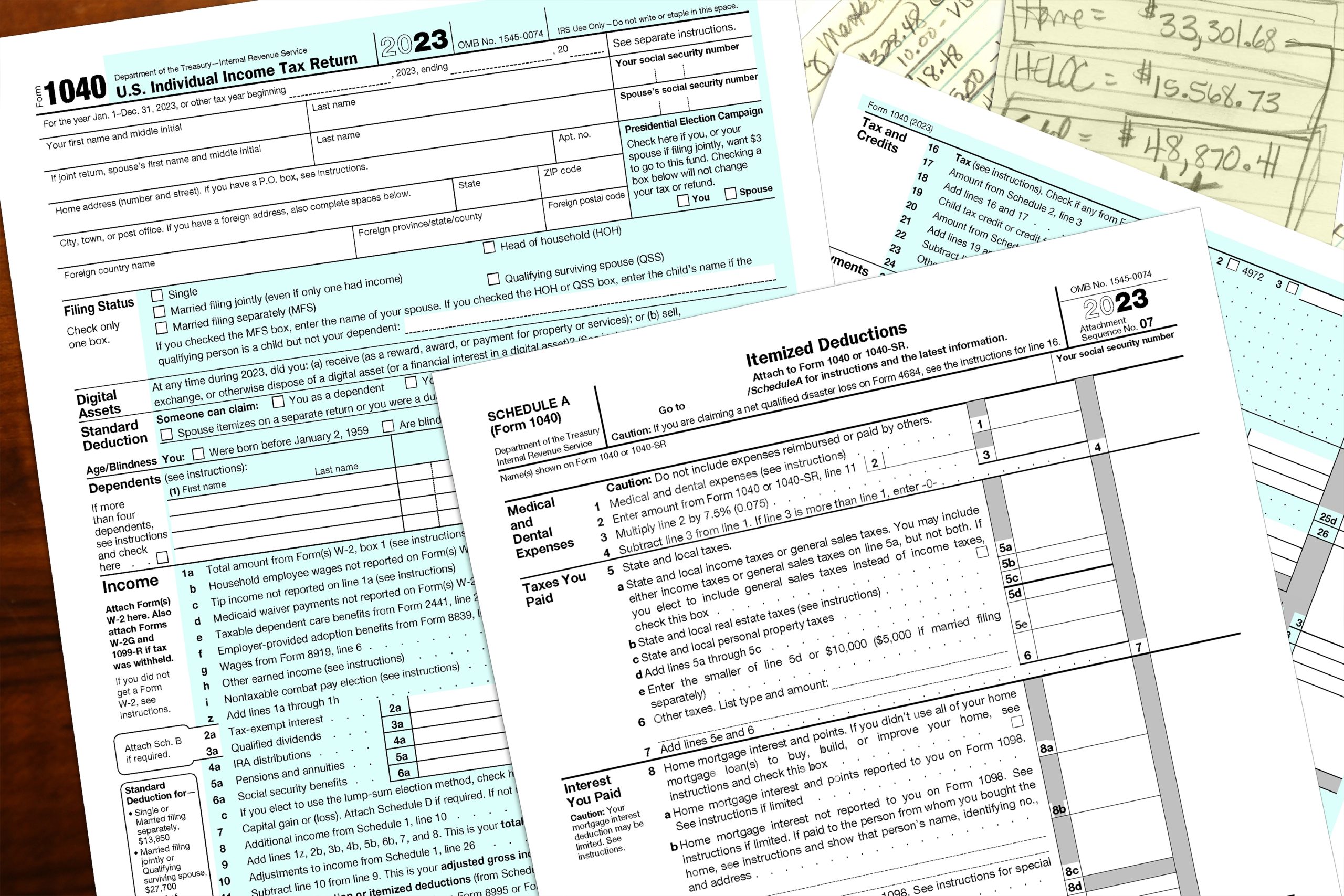Tax season. Two words that can instantly conjure up feelings of anxiety, confusion, and a sudden urge to procrastinate. I mean, we’ve all been there. Remember the first time you had to confront the legendary Form 1040? It felt like the final chance in a video game you were nowhere near ready to beat. But don’t worry, in today’s guide, I’m here to walk you through it, step by step, sans the bureaucratic jargon. Get ready: we’re about to conquer Form 1040.
What on Earth is Form 1040?

Before diving in, let’s define our beast. Form 1040, also adoringly known as the “U.S. Individual Income Tax Return”, is the standard form that most U.S. taxpayers use to file their annual income tax returns. Think of it as a summary of your annual financial milestones: your income, deductions, credits, and the resulting tax or refund. Pretty important, right?
Versions of Form 1040: One Size Does Not Fit All
Over the years, the 1040 has had a couple of versions and makeovers. Once we had the 1040A and 1040EZ. Then, the IRS did a bit of spring cleaning and simplified things. Now, there’s just one primary Form 1040 with a series of schedules to go along if needed. These schedules are like those extra attachments in your email – not always necessary, but essential when you’ve got additional info to add.
Breaking Down the Form: A Tour
Let’s break down Form 1040, section by section.
Personal Information: Like any good introduction, this is where you tell the IRS who you are. Name, address, social security number – the usual. Plus, if you’ve got a spouse or dependents, you’ll mention them here as well.
Income: This is where the magic happens. Or, rather, where you spill the beans on how much you made this year. Wages, salaries, interests, dividends, pensions, and more – it all gets listed.
Adjustments to Income: Here’s where you might reduce that income a bit. Deductions like student loan interest or contributions to retirement accounts can be included here.
Tax, Credits, and Payments: After calculating your adjusted gross income and applying any standard or itemized deductions, it’s crunch time. This section lets you subtract credits and add taxes to determine what you owe or what’s owed to you.
Refund or Amount You Owe: The grand finale. By now, you’ll know if you’re getting money back (fingers crossed!) or if you owe Uncle Sam.
Schedules: The Essential Add-ons

Think of these schedules as extra credits, subplots in the story of your tax year.
Schedule 1: For additional income or adjustments to income, like alimony, business income, or unemployment compensation.
Schedule 2: If you owe AMT (Alternative Minimum Tax) or need to make other tax payments.
Schedule 3: For claiming non-refundable credits, other than the standard child tax credit or credit for other dependents.
Schedule A: This is for itemized deductions. If you don’t take the standard deduction and opt for specifics like medical expenses or charitable donations, this is your go-to.
Schedule C: For the self-employed or those running a sole proprietorship or a side business. It details profits, losses, and expenses.
Schedule D: Capital gains and losses. Did you sell property, stocks, or bonds? This one’s for you.
Schedule E: For reporting supplemental income or loss from things like rental real estate, royalties, or partnerships.
… and there are more. Depending on your unique financial picture, you might need to include other schedules. But the above are some of the main players in the game.
Tips for Conquering Form 1040

Stay Organized: Start early, and gather all necessary documents well in advance. Waiting until the last minute will only amplify the stress.
Use Technology: There are a plethora of tax software options available that can guide you through filling out the 1040 and its schedules. It’s like having a financial GPS.
Seek Expert Advice: If you’re unsure or if your financial situation is complex, don’t hesitate to consult with a tax professional. They live and breathe this stuff, so let their expertise guide you.
Stay Updated: Tax laws change, and forms get updated. Always ensure you’re working with the most recent version of Form 1040 and be aware of any tax law changes that might impact your return. It’s best to refer to the official IRS website or consult a qualified tax professional for the most current information.
If you’re on the hunt for a smoother tax journey, FileSmart might just be your go-to. FileSmart is all about breaking down the tax jargon, offering courses to turn that tax lingo from “huh?” to “got it!” Plus, the perk of being able to toss out five tax questions to pros every month? Priceless. So, whether you’re soloing your tax adventure or seeking that expert touch, FileSmart’s got your back.
Conclusion: Embrace the Process
At the end of the day, Form 1040 is a rite of passage. With a touch of patience, solid organization, and perhaps a bit of expert insight, it becomes less of a task and more of a goal to achieve. As the days to tax season tick away, let’s adjust our lenses. Rather than the quiet dread, consider it an engaging challenge.
Remember, the satisfaction of submitting that form, especially when you understand every bit of it, is a reward in itself. And in this journey, platforms like FileSmart are there to ensure you’re never truly alone. Happy tax-filing, friends!































0